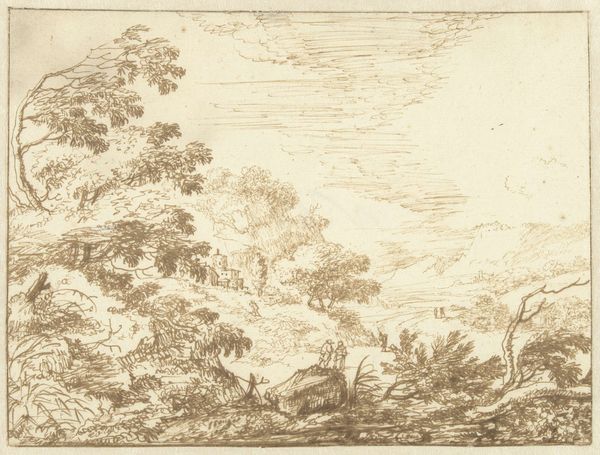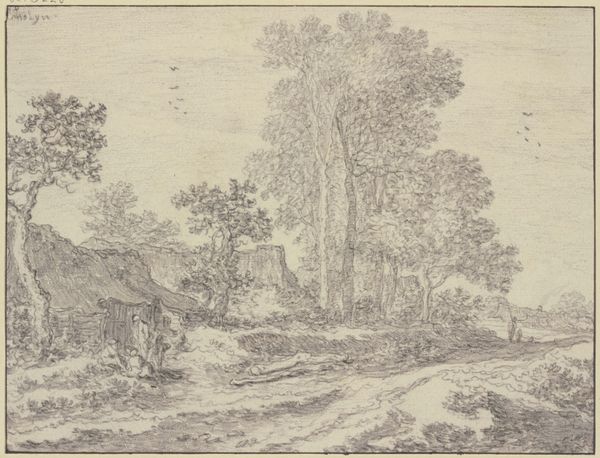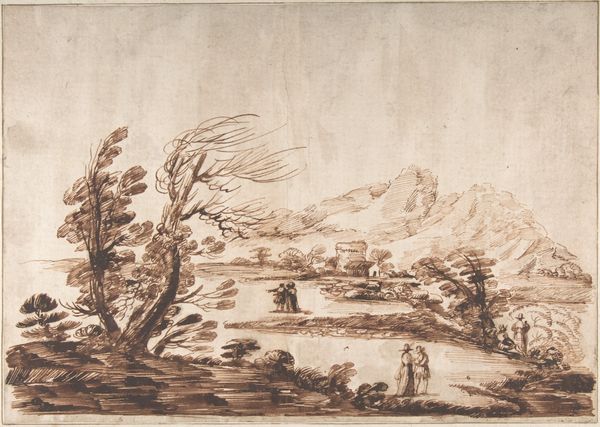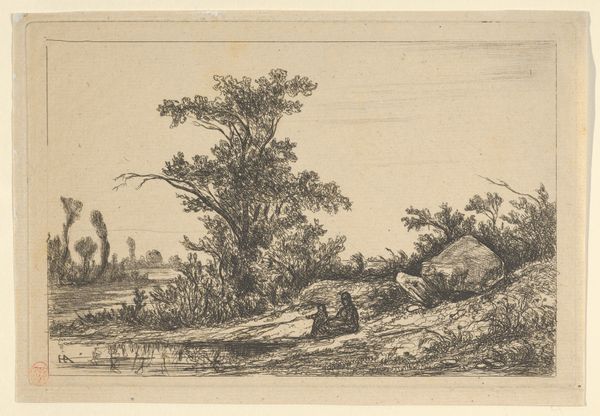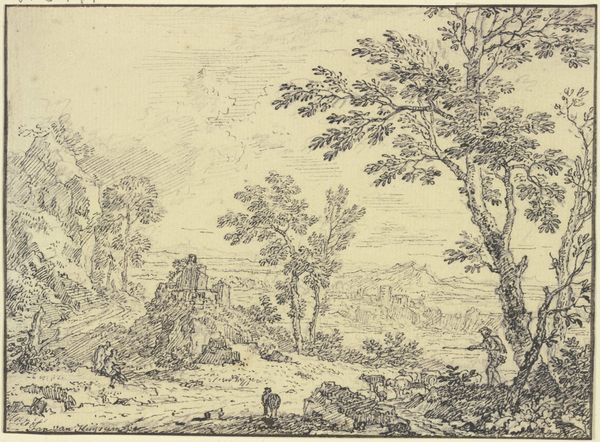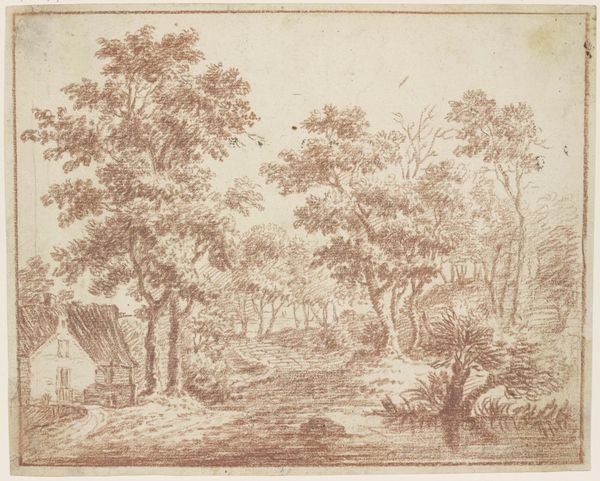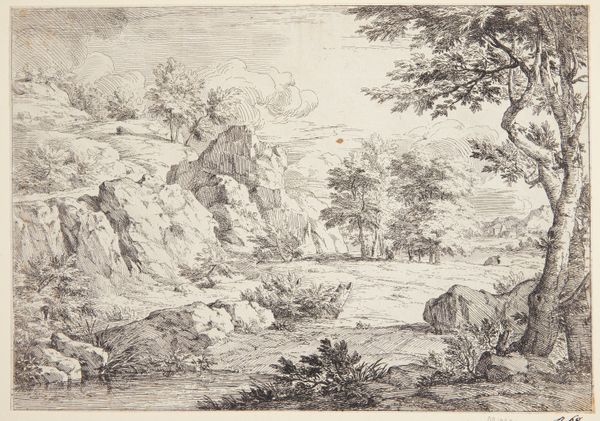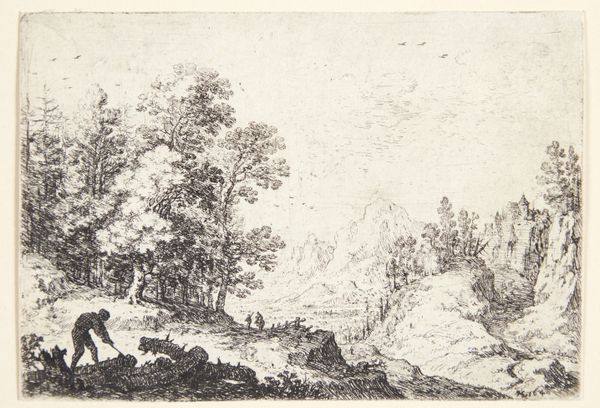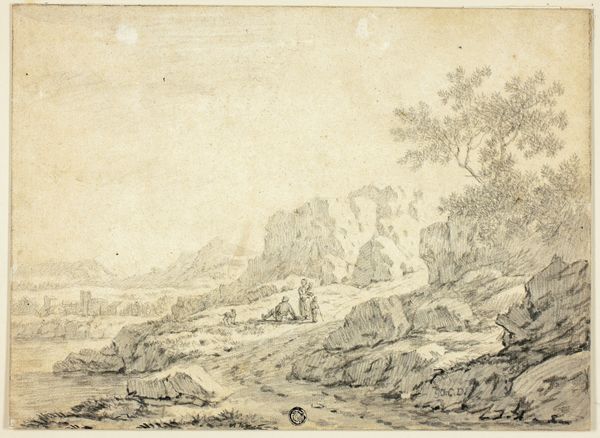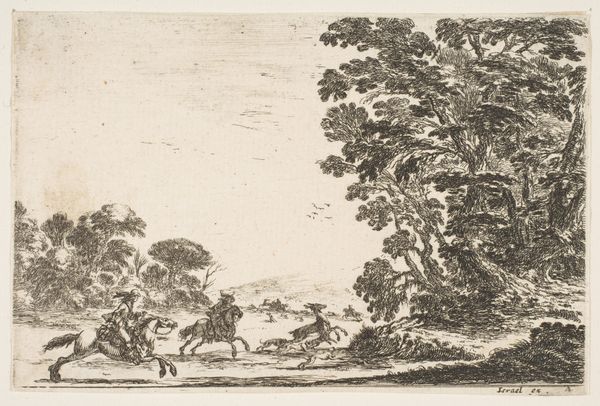
drawing, print, etching
#
drawing
#
baroque
# print
#
etching
#
landscape
#
etching
#
line
Dimensions: sheet: 9 15/16 x 14 in. (25.3 x 35.6 cm)
Copyright: Public Domain
Editor: So, this etching, called "Landscape", comes to us from somewhere between 1600 and 1700. It’s a seemingly simple pastoral scene, but the closer I look the more dramatic and precarious the landscape appears. What do you see in this piece? Curator: The intrinsic properties are quite striking. The linear quality predominates; note the rigorous arrangement of lines and hatching. Do you see how the artist uses line not just to delineate form, but to build volume and create textures? Editor: Absolutely. Especially on the cliff face, you can really feel the rock and the sparse vegetation just from the hatching. What about the large open sky above? Curator: The sky acts as a foil, emphasizing the textural complexity of the landscape below. Consider, too, the spatial relationships: The artist contrasts the dense foreground details with the receding background elements. It serves to augment our experience of depth within a decidedly flattened picture plane. What does that tension communicate? Editor: It's almost like the artist is challenging the traditional rules of perspective. Rather than disappearing smoothly into the distance, the landscape seems to push back, becoming an intricate web of lines. Curator: Precisely. It's a sophisticated manipulation of form, line and space, independent of any specific contextual interpretation. The formal properties of the work create its meaning. Editor: That focus on the interplay of form helps me understand how a simple landscape can feel so active and engaging. I will definitely pay more attention to line in future works.
Comments
No comments
Be the first to comment and join the conversation on the ultimate creative platform.
